Hypoxemia: Physiology
Article Sections
Introduction
Hypoxemia, hypoxia, anemia, and ischemia are related, yet distinct processes:
- Hypoxemia: Low dissolved oxygen (O2) content of arterial blood, commonly defined as an arterial partial pressure of O2 (PaO2) <60 mm Hg. Example: parenchymal lung disease.
- Hypoxia: Low O2 content at the end-organ and tissue level. It can be caused by hypoxemia, anemia, or ischemia. Prolonged hypoxia typically results in tissue necrosis. Example: myocardial infarction.
- Anemia: Low number of circulating red blood cells (and therefore, hemoglobin content) in arterial blood. Example: iron deficiency.
- Ischemia: Low perfusion of end-organs and tissues, resulting in decreased O2 and other nutrients (eg, glucose). Example: arterial thrombosis.
This article discusses the mechanisms, pathophysiology, and evaluation of hypoxemia.
Normal oxygenation
Normal oxygenation requires 3 elements:
Continue Learning with UWorld
Get the full Hypoxemia: Physiology article plus rich visuals, real-world cases, and in-depth insights from medical experts, all available through the UWorld Medical Library.
Figures
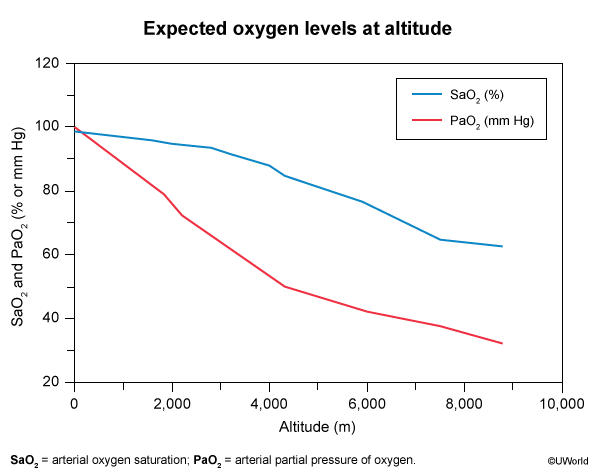
Figure 1
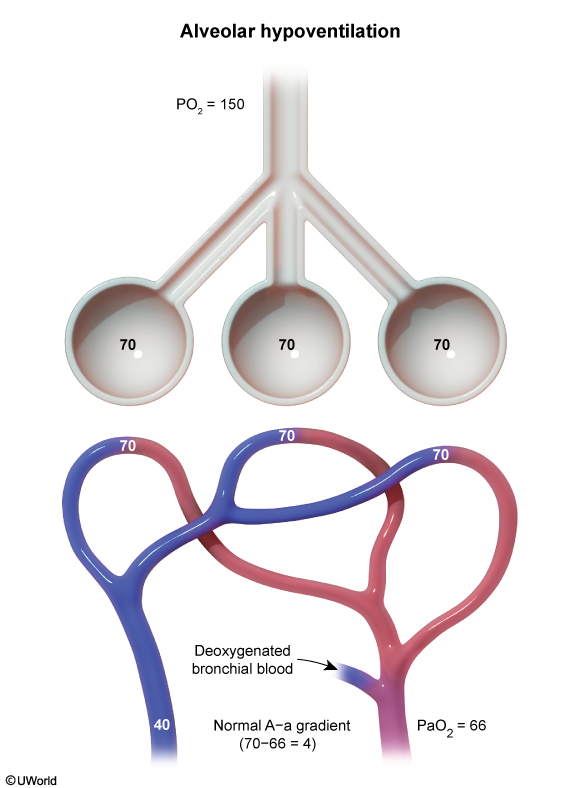
Figure 2
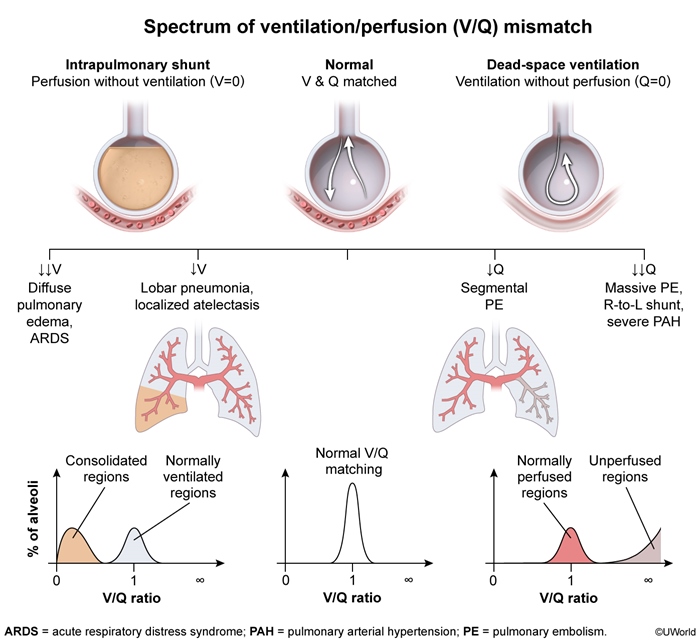
Figure 3
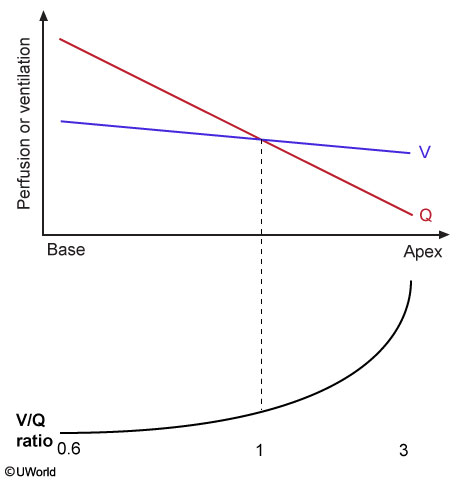
Figure 4
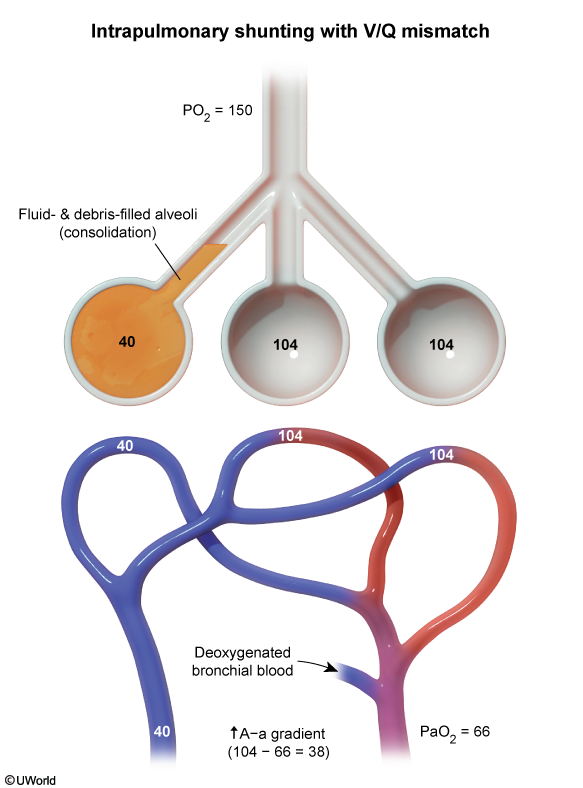
Figure 5
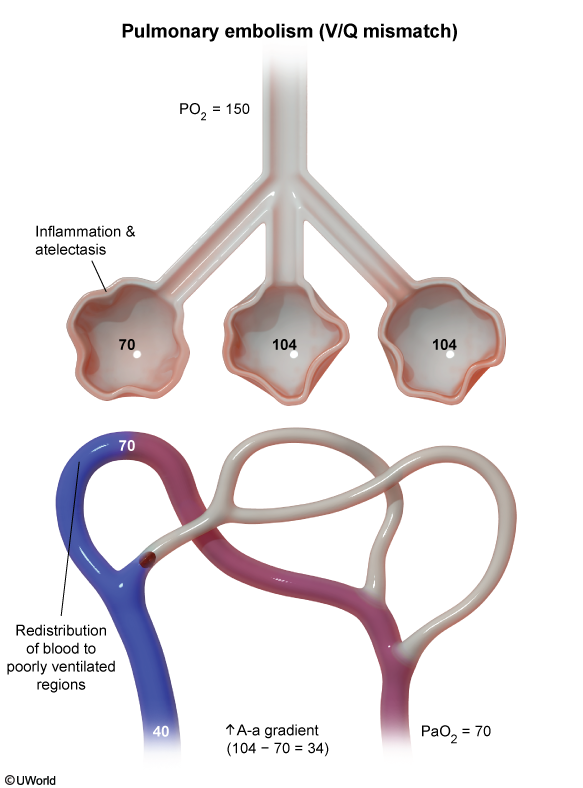
Figure 6